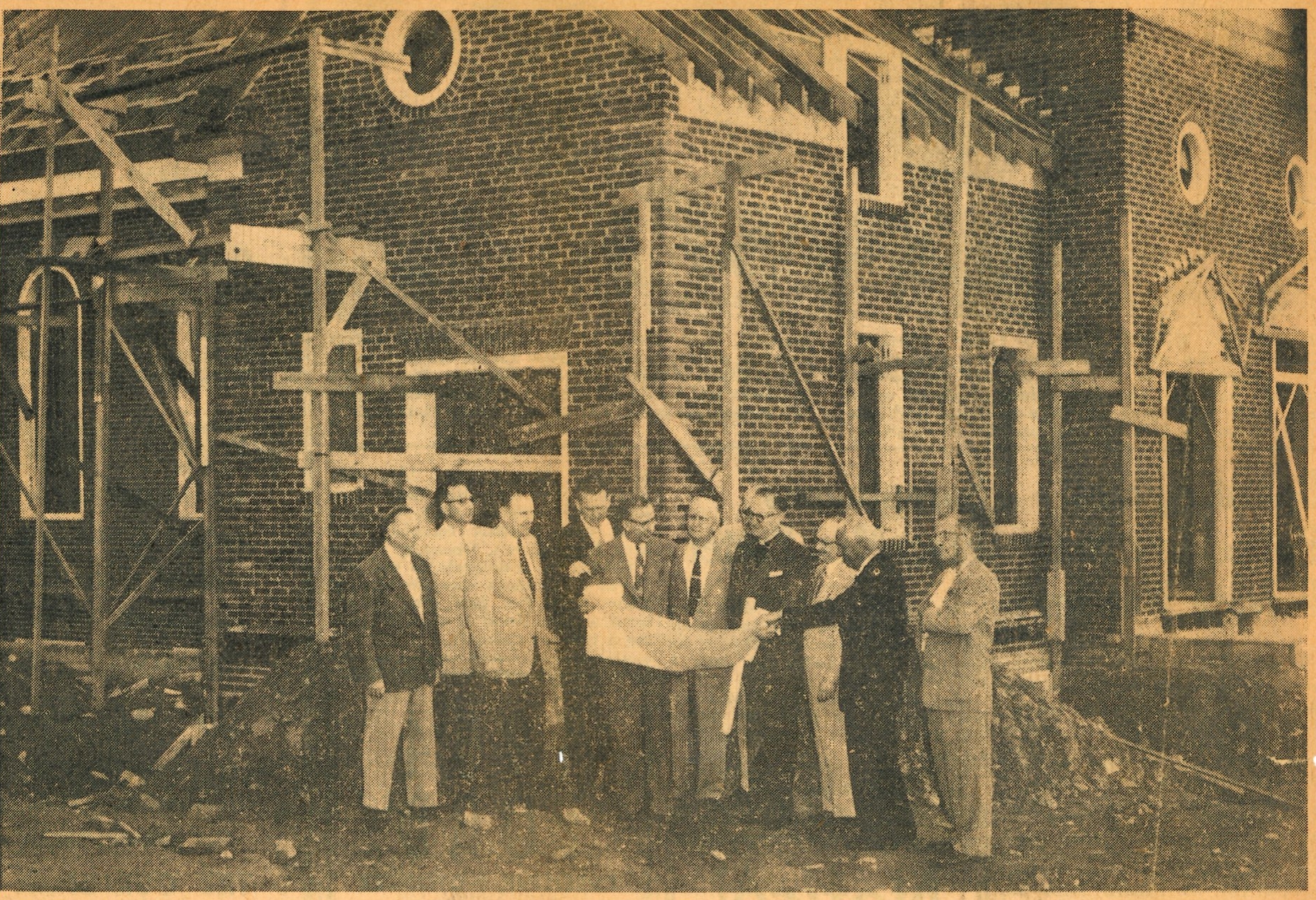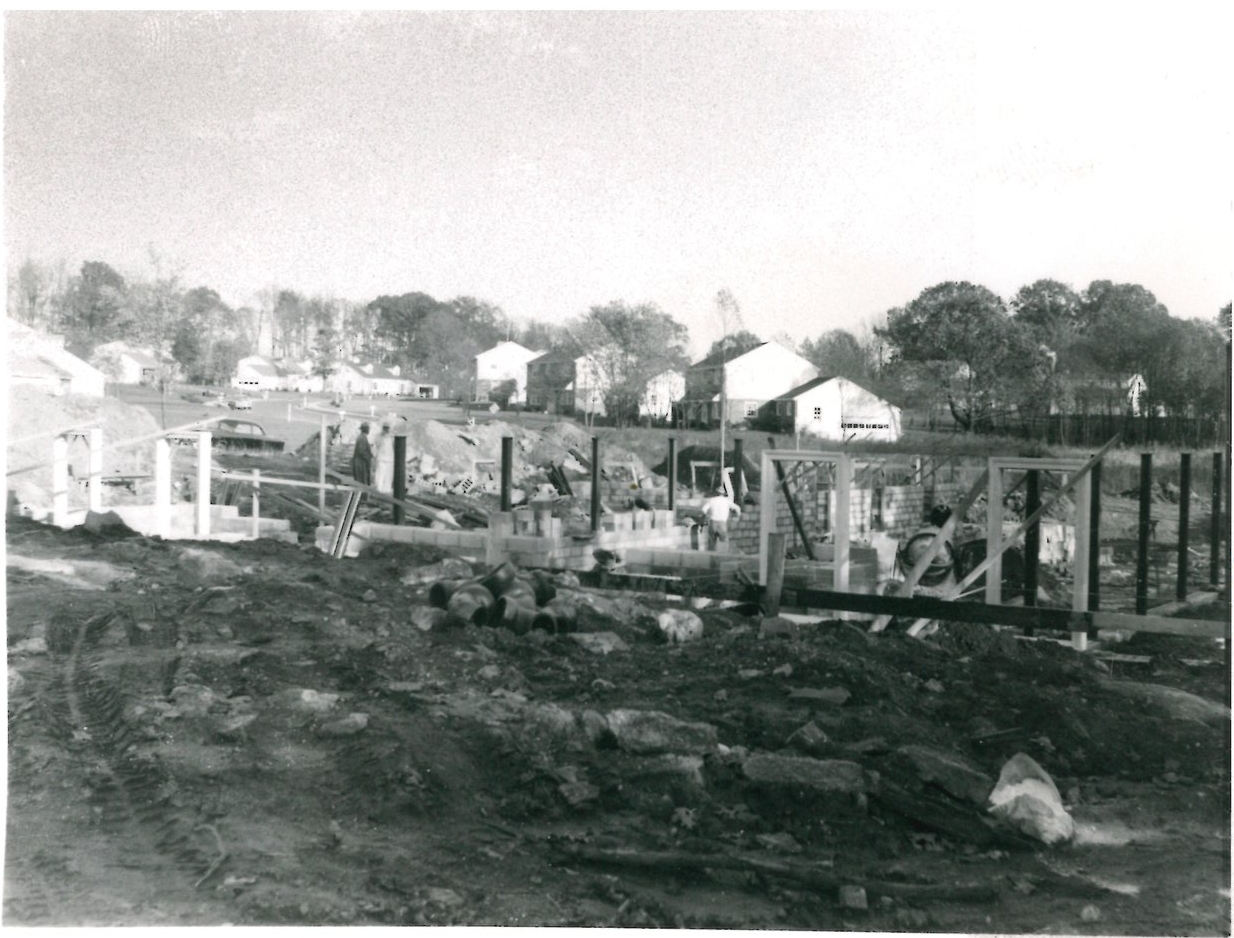Part 2: A Professor and a Builder – Dr. Kuehner and Rev’d Lingle
As we move past the first year, the telling of our history becomes more difficult owing to a paucity of detailed sources. Sometime late in 1943 or early in 1944 Rev’d Cranston resigned as Rector, having begun an affair with the parish organist for whom he left his wife and children (a little research has revealed that he died 17 years ago (in 2000) in Lancaster, California at the age of 87. According to his obituary, after leaving St. Mark’s he served a variety of churches in Pennsylvania, Connecticut, Maine and New York. In 1952 Cranston joined the United Church of Christ and his last pastorate on the east coast was a UCC parish in Long Island (1960-1980) after which he moved to California where he continued to pastor UCC churches until the age of 75).
In 1944, the Rev. Dr. Fred Carl Kuehner was called to be the 2nd Rector and the congregation continued to grow. Dr. Kuehner served as Rector for 6 years before leaving parish ministry in favor of the academy (in 1950). He became a professor and then Dean at the Reformed Episcopal Seminary. Though a professor of Biblical Languages, he “taught a far wider range of courses than is usual. But he was an unusually gifted teacher as hundreds of alumni who call him blessed will readily testify.”[1] Kuehner did not publish much, but is remembered as one of the translators of the New International Version of the Bible, which was a very popular version amongst Evangelicals for a few decades.
The Reverend Paul Wayne Lingle was the 3rd Rector of the parish (beginning in January 1951). Reverend Lingle had previously been the Rector of a nearby Reformed Episcopal Church called The Memorial Church of our Redeemer (10th and Rockland Streets, Philadelphia). Under his leadership at St. Mark’s, it soon became necessary to hold 2 services on Sunday morning in order to accommodate the size of the congregation. The congregation grew even more when 55 members of the Memorial Church of our Redeemer began to worship here in 1954 (this was owing to the fact that their property in Philadelphia had been sold). Later (in 1955), the two parishes official merged.
With a growing congregation, Rev’d Lingle decided that it was time to build and thus the parish began to look for a property to buy. In the summer of 1954, 1.75 acres of land were purchased in Rydal (at the intersection of Meetinghouse and Beverly Roads). Plans were drawn up by Burroughs & Stigers: Engineers and Architects. The builders employed were the same as those who had constructed the chapel on Fisher Road.
With plans laid out, and the ground purchased and consecrated, the cornerstone for St. Mark’s new home was laid with great ceremony by Bishop Higgins and the Rector on May 20, 1956. That same year the parish built the Rectory (1162 Beverly Rd), into which the Lingle family moved in September. Six months later, on November 25, 1956, Bishop Higgins (assisted by Bishop Joseph Kearney and Rev’d Lingle), dedicated the new building to the greater glory of God and the expansion of his kingdom. Around the year 1962, founding member John W. Kelly thought back to that event and wrote: “We believe some workers were brought to better know our Lord through this work. All of us were blessed and have something to be thankful for.”
In May 1957 a capital campaign (called the Advancement Crusade) was started. It was designed to last 3 years. Later that year additional pews (including pews for the balcony) and other furniture was commissioned from the Sauder Company in Ohio. In 1958 the parking lot was rough graded and rolled. The Stauffer Company laid down blacktop in 1959.
On June 22, 1959, just 3 years after completing the construction of the church at Meetinghouse and Beverly Roads, Rev’d Lingle resigned (to take effect September 7). Considerable tension had apparently developed between him and some of the lay-leadership and unfortunately the Rector did not receive the help that he felt that he needed from his bishop, and thus, in the words of the parish archivist, he “left St. Mark’s church for what he felt was a more pressing call to another church.” Soon after leaving St. Marks, Lingle became the Rector at nearby St. John’s Episcopal Church (Huntingdon Valley) and a significant number of St. Mark’s parishioners followed him (under Lingle, St. John’s Church began to grow significantly). The rather sudden departure of their Rector and a substantial percentage of her people was a serious blow to St. Mark’s and it would take many years for the parish to recover from such a significant reversal to her hitherto uninhibited growth.



